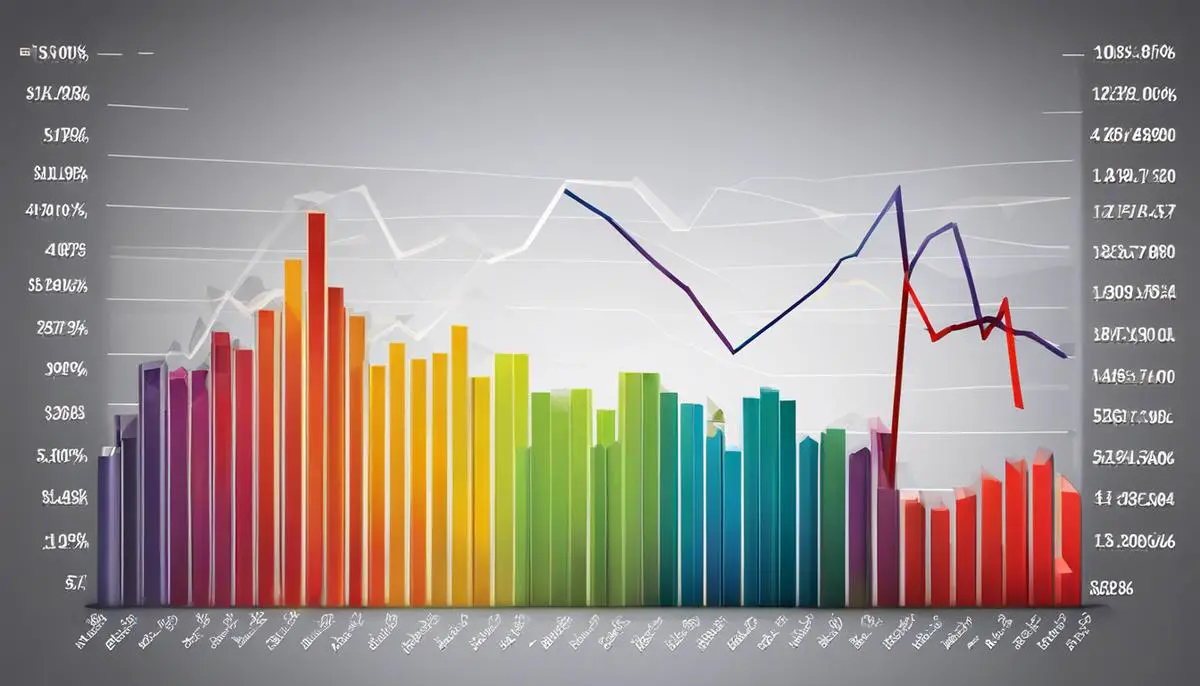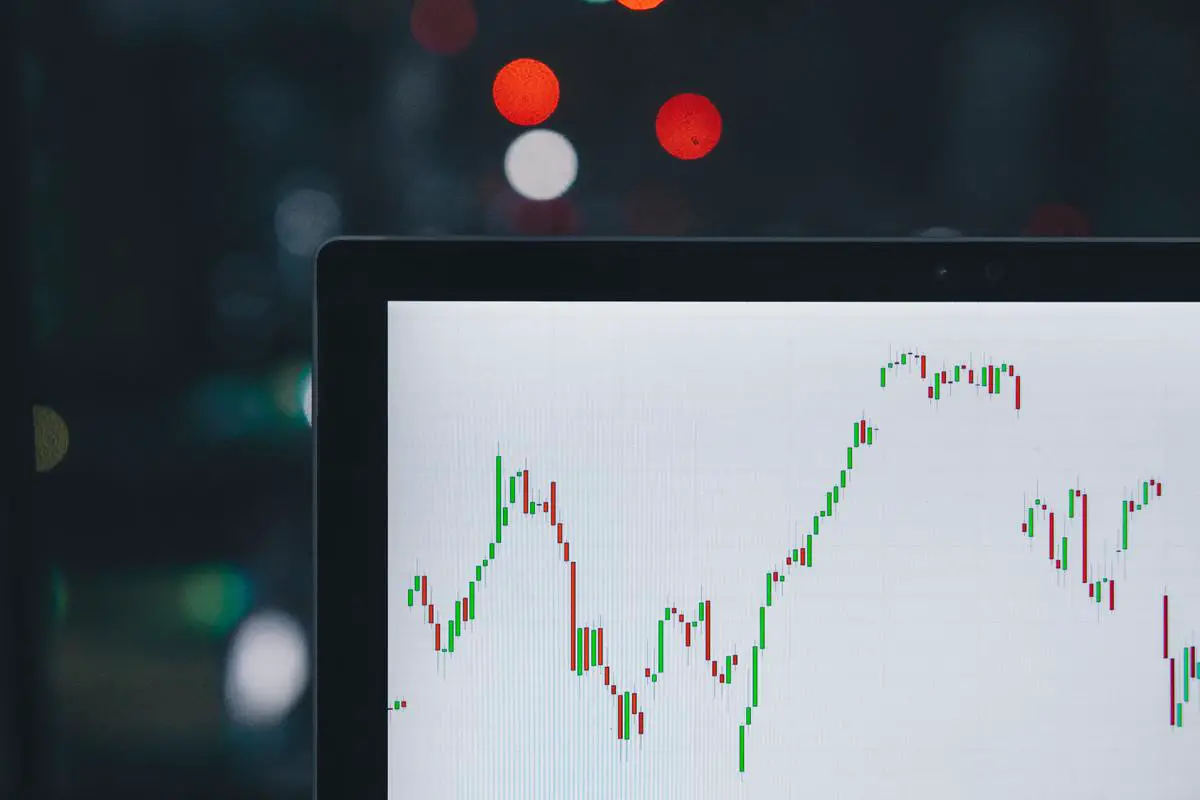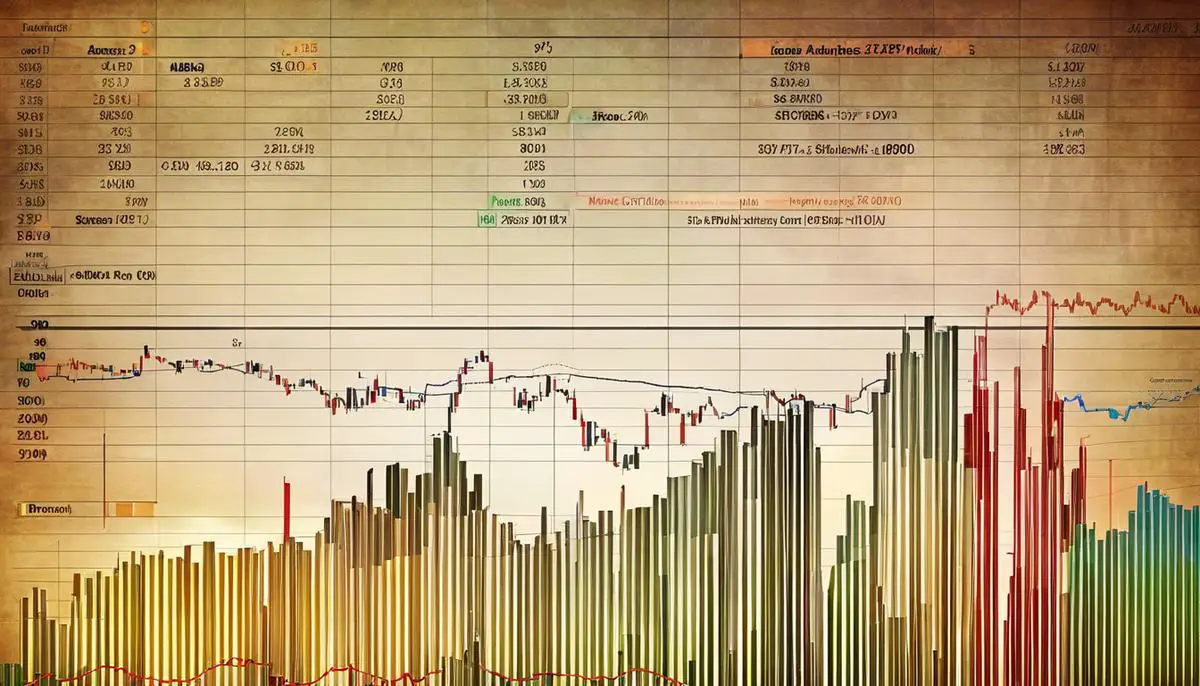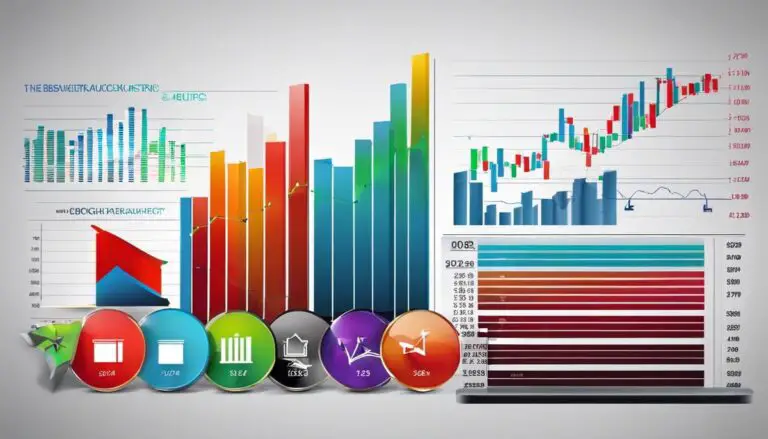Navigating the stock market can be akin to learning a new language for those stepping into the world of investing. In this exploratory voyage, we dive into the heart of market indices, unravel the essentials of trading orders, dissect the anatomy of stock valuation metrics, and articulate a spectrum of investment strategies. Designed to demystify the complexities, this essay embarks upon elucidating these vital concepts, ensuring a robust foundation for making informed decisions. Whether you are a curious newcomer or a seasoned investor seeking a refresher, this journey through Wall Street’s vernacular will enhance your financial dialogue and market understanding.
Market Indices
Decoding Market Indices: Economic Vital Signs at a Glance
In the energetic pulse of global markets, indices serve as essential barometers, measuring the health of economies with clinical precision. Picture the Dow Jones, the S&P 500, and the Nasdaq – these are not just financial acronyms to toss around in board rooms; they are the crystal balls of industry, forecasting the twists and turns of economic vitality.
When the Dow soars, it’s signaling investor confidence, broadcasting an affirmative nod to large industrial entities and the economy’s overall strength. The S&P 500 paints an even broader stroke across the economic canvas, with 500 of the top shares in various sectors reflecting substantial market coverage. A robust S&P 500 index is a sure sign of a diversified and vibrant economy.
Meanwhile, the Nasdaq becomes the go-to thermometer for the tech savvy, pulsing with the heartbeat of innovation. It’s a litmus test for risk appetite, proving that when tech stocks spike, so does willingness to embrace the new and the next; conversely, a falter might indicate a retreat to safe havens.
Let’s not overlook the global indices – FTSE, Nikkei, DAX – that are exceptional indicators of regional economic health and influencers of global investment trends. They serve as testament to the fact that today’s economies are interlinked, and a jolt in one corner of the world can create ripples, or even waves, elsewhere.
Nonetheless, while market indices offer key insights, savvy entrepreneurs and investors know they are but one piece of a more complex puzzle. These numbers must be weighed alongside employment statistics, GDP, consumer confidence, and a myriad of other economic indicators to truly gauge the economic climate.
In essence, market indices are not mere numbers. They’re the language through which markets communicate; a continuous flow of data that, if listened to attentively, has the power to inform strategic business decisions and innovative product development, serving as guideposts for where the economy stands today – and where it may be tomorrow.

Trading Orders
The Strategic Edge: Commanding Investment Outcomes with Trading Orders
As the gears of global commerce grind ever more intricately, those with the acumen to navigate the stock market with precision always find themselves a step ahead. In the high-stakes chess game of investment, savvy entrepreneurs understand the pivotal role that trading orders play in sculpting investment outcomes. Executing the right order type at the opportune moment is not just a matter of chance—it’s a strategic move, refined through experience and attuned to market dynamics.
Market orders, the simplest yet most immediate of transactions, offer investors the chance to buy or sell at the current market price, seizing opportunities the moment they arise. While the execution is almost instant, the trade-off is a lack of price control, which can lead to unfavorable outcomes during volatile market periods.
Limit orders, by contrast, provide control, allowing investors to specify the price point at which they’re willing to buy or sell a stock. Astute players use these to saddle market waves, purchasing at lows and selling at highs, all while maintaining a disciplined investment threshold.
Stop orders, colloquially known as ‘stop losses’, act as a safety net, enabling investors to limit losses or protect profits. By setting a price at which the stock is automatically sold, strategic investors can navigate through market downturns, preserving capital for future ventures.
The nuanced ‘stop-limit’ order combines the features of stop and limit orders, offering a two-pronged approach to control. Investors utilize it to trigger a sale or purchase at a predetermined price, ensuring precision in execution, crucial during tumultuous market conditions.
Furthermore, sophisticated traders employ advanced orders such as trailing stops and bracket orders to dynamically manage investments. Trailing stops adjust automatically to stock price movements, locking in profits and mitigating risks, while bracket orders encompass an initial order complemented by two conditional orders, providing a structured buy and sell strategy.
Every trading order serves as a brushstroke in the grand canvas of investment strategy, capable of rendering vivid outcomes if wielded with deft expertise. In deploying these transactional tools, the adept investor crafts a portfolio resilient to market shocks and attuned to the rhythms of financial opportunity.
Thus, as the world remains ever observant of the indicators represented by major indices, it’s the shrewd exploitation of trading orders that fine-tunes investment performance. Beyond the economic indicators and market indices, it’s these decisions – both bold and calculated – that carve a path to sustained wealth and commercial prowess. In the grand theatre of world economics, those who master the art of the order are often the ones leading the standing ovation.

Stock Valuation Metrics
Delving further into the dissection of a stock’s true value, let’s direct our laser focus on the granular metrics that provide a distilled perspective of investment potential.
Price-to-Earnings Ratio (P/E) stands as a stalwart metric, shedding light on the value placed on each dollar of a company’s earnings. A high P/E might suggest a stock’s price is ahead of its earnings growth, signaling potential overvaluation or a bet on significant future growth. In contrast, a lower P/E can indicate undervaluation, presenting a prime entry point for savvy investors seeking underappreciated stocks.
Earnings Per Share (EPS) is another critical indicator, encapsulating profitability on a per-share basis. When EPS growth trends upward over time, it paints a picture of a company’s escalating value proposition to shareholders. This metric works in tandem with P/E, providing a fuller narrative of a stock’s earning power and growth trajectory.
The Price-to-Book Ratio (P/B) pierces through the market noise, offering a transparent view of a company’s valuation relative to its balance sheet strength. Businesses with assets that carry substantial tangible value — think real estate or manufacturing equipment — are particularly suited for P/B ratio evaluations. A P/B less than one could signal hidden equity, ripe for the astute investor’s picking.
Debt-to-Equity Ratio unveils a company’s reliance on borrowing. An optimized balance between debt and equity funding indicates a firm’s financial agility, while excessive reliance on debt could spell vulnerability in times of economic downturns. A lower ratio suggests a more robust financial foundation, capable of weathering market volatility.
Return on Equity (ROE) is the ace in the hole for stock valuation, measuring a company’s effectiveness in spinning shareholder’s equity into profit. It is the litmus test for assessing management efficiency and directly influences shareholder returns. A high ROE represents a well-oiled machine, while a low ROE may point to structural inefficiencies or stunted growth prospects.
Cash Flow Analysis becomes an indispensable tool when evaluating a stock’s intrinsic value. Accounting profits might flatter to deceive, but cash flows are indisputable — the lifeblood of a business. Robust and consistent cash flow generation signals an enterprise’s potency in maintaining liquidity, funding growth initiatives, and declaring dividends. Negative trends here raise red flags that warrant an investor’s caution.
Dividend Yield and Payout Ratio provide a two-pronged analysis for income-focused investors. A stock’s dividend yield serves as a beacon for immediate income potential. Meanwhile, the payout ratio offers a glimpse into the sustainability of those dividends. A modest payout ratio leaves room for dividend growth, while a high ratio could portend cuts in adverse circumstances.
Finally, the Beta of a stock quantifies its dance with market volatility. Those aiming to construct a resilient portfolio keep a close watch on Beta values, calibrating exposure to systematic risk. A Beta greater than one implies above-average market sensitivity, while a figure below one suggests defensive characteristics, a potential haven amid turbulent market seas.
These metrics, when harnessed astutely, not only aid in piercing the surface value of a stock but also carve a pathway to capitalizing on hidden financial opportunities. Precision in marrying these financial signifiers with an investor’s unique strategy for managing investments ensures the creation of a portfolio that is both diversified and aligned with the market’s myriad rhythms. A well-curated selection of stocks, underpinned by hands-on analysis of these pivotal metrics, can become the cornerstone of sustainable financial success.

Investment Strategies
Embarking on the journey of sustained investment success mandates a multifaceted strategy that incorporates both the analytical rigor of financial metrics and the sagacious application of market instruments. Astute investors envelop their approach with a tapestry of valuation techniques while tactically leveraging order types to optimize entry and exit points in the markets.
Valuation metrics such as the Price-to-Earnings Ratio (P/E) and Earnings Per Share (EPS) serve as critical barometers for assessing an asset’s relative value and earning power. The P/E ratio illuminates the market’s valuation of a company’s earnings, enabling a swift comparison to industry peers, while EPS offers a direct window into the profitability afforded to shareholders.
Further refining the valuation process, the Price-to-Book Ratio (P/B) provides insight into market assessments vis-à-vis a company’s net asset value, often revealing undercurrents in sentiment about growth prospects or management efficacy. Meanwhile, the Debt-to-Equity Ratio and Return on Equity (ROE) stand as sentinels of financial health and efficiency, alerting investors to balance sheet robustness and the adeptness of capital allocation.
Cognizant of liquidity and solvency, cash flow analysis excels as the lifeblood of pragmatic financial scrutiny. It dissects the quality and sustainability of earnings, assorting fact from fiction in the tale of operational prowess. Coupling this with the dividend yield and payout ratio offers investors an appetite-sating view on return consistency and corporate confidence in future cash flows.
Beyond valuation, successful portfolio management is forged in the fires of precision and flexibility, facilitated by the strategic utilization of order types such as market, limit, stop, and stop-limit orders. Each tool affords the investor granular control over transaction timing and price, mitigating risk while distilling advantage from the roiling markets. Indeed, inculcating orders like trailing stops or bracket orders into an investment playbook can produce a shield of resilience around the portfolio, safeguarding gains and curtailing losses in volatile times.
Market savvy extends beyond order types and financial metrics, embracing the concept of portfolio beta – a measure of systemic risk compared to the broader market. Investors wielding this statistic can adroitly adjust their market exposure, aligning their risk appetite with prevailing market sentiment and economic indicators, crafting a bulwark against unsystematic risks.
In sum, the investment zeitgeist commandeers a compound approach, blending robust financial analysis with judicious execution strategies. The enlightened investor sculpts a resilient portfolio, grounded in valuation science and executed with precision, to capitalise on financial opportunities and carve a path of long-term success. Dextrous navigation through the torrent of market variables remains imperative, and the adept investor holds steadfast, eyes firmly fixed upon the horizon of fiscal prosperity.

Risk Management
Mastering Risk Management: The Lynchpin of Successful Stock Trading
In the dynamic arena of stock trading, where one’s financial footing can change with every tick of the market, mastering risk management reigns supreme as the determining factor of enduring success. The waves of volatility upon which traders surf demand not only a profound understanding of strategic positions but also an iron-clad method of safeguarding assets. Risk management is not merely a cautious afterthought—it is the core essence of thriving in a market that rewards the well-prepared and penalizes the unwary.
To navigate the turbulent waters of stock trading, esteemed traders employ an array of tools and techniques designed to minimize potential losses while optimizing opportunities. Central to these methodologies is the concept of position sizing. The art of determining the appropriate amount of capital to allocate to any given trade is paramount. Size does matter – deploying too much capital risks magnanimous losses, while committing too little squanders potential returns.
Another cornerstone in the bulwark against uncertainty is diversification. Astute traders distribute their investments across various sectors, asset classes, and geographic boundaries to mitigate the impact of a decline in any one holding. Not putting all eggs in one basket transcends cliché; it is a strategic move for survival and prosperity.
The utilization of technical analysis is also a formidable weapon in a trader’s arsenal. Chart patterns, moving averages, and momentum indicators like the RSI and MACD serve as the tea leaves of the trading world, offering insights into potential market direction and entry and exit points, thus managing risks associated with market timing.
Yet, it’s not solely about defensive maneuvers. Risk management plays a crucial role in scaling profitable trades. Knowing when to lock in profits and when to let them run, by employing trailing stops, for example, strikes the delicate balance between caution and greed – a challenge even for seasoned traders.
Moreover, psychological discipline forms the bedrock of risk management. Many a trader’s strategy has been capsized by emotional turbulence. Fear and greed, the infamous saboteurs of sound decision-making, must be tamed. This means adhering to a trading plan with the rigor of a master chess player—a plan that specifies entry and exit criteria, anticipated returns, and stop-loss levels.
Being attuned to global economic shifts and geopolitical events that can ripple through the markets is essential for preemptive risk management. This macroeconomic vigilance allows one to pivot strategies in anticipation of or response to market shocks. Hence, the trader who has their finger on the pulse of the world at large possesses the foresight to poise their portfolio for any eventuality.
Furthermore, regulatory compliance and staying abreast of changes in securities law are not only obligatory but are proactive forms of risk abatement. The interplay between evolving regulations and market conduct requires continuous learning and adaptation, which prudent traders integrate into their risk management practices.
Mastering risk management is the defining factor that separates the temporary victors from the enduring titans of stock trading. It is not just about mitigating losses—it’s about embracing a holistic approach that interweaves market savvy with strategic foresight, emotional control, and operational discipline. After all, in the high-stakes game of stock trading, risk management is not just about survival; it’s about thriving.

Having journeyed through the intricate landscape of the stock market’s language, from the broad snapshots provided by major market indices to the nuanced tactics of risk management, we find ourselves equipped with a deeper appreciation of the investment realm. Embracing these layers of knowledge not only shapes a more confident investor but also paves the way for making strategic choices that resonate with one’s financial narrative. Let this newfound insight into the stock market be your guiding compass, helping to steer through the waters of uncertainty and towards a future of financial clarity and opportunity.



